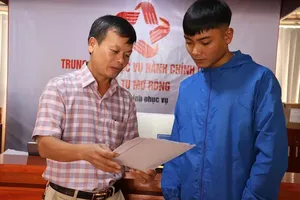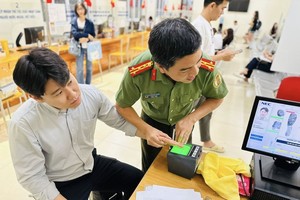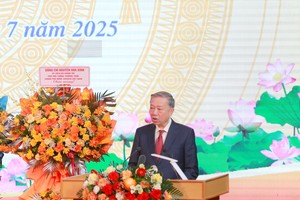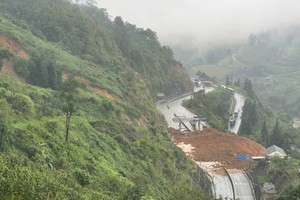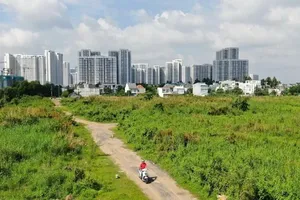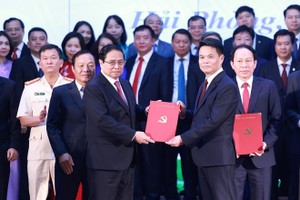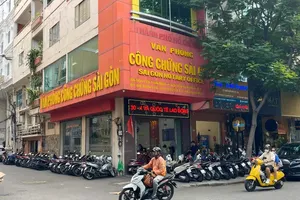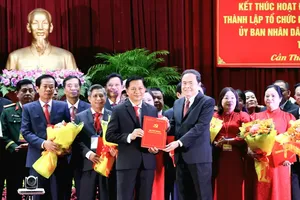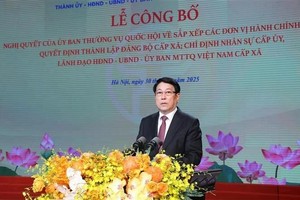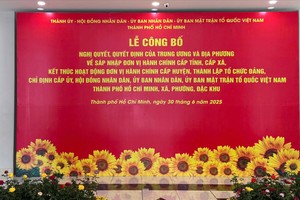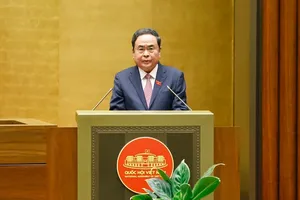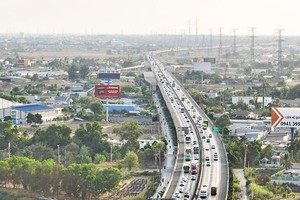SGGP reporters recently joined local and foreign visitors at Ho Chi Minh City’s Thong Nhat (Reunification) Hall where 35 years ago, liberation army pilot Nguyen Thanh Trung bombed the palace, called Doc Lap (Independence) Palace at the time, while liberation troops were closing in on the city.
Back to the past
In 1868, French Governor in South Vietnam, La Grandière, placed the first stone on the 12-hectare area to mark the ground-breaking of the construction of the Indochina Governor Palace, also called Norodom Palace.
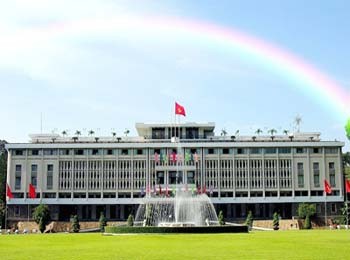
After the Geneva Treaty was signed, the area was handed over to Prime Minister Ngo Dinh Diem, who changed its named to Doc Lap (Independence) Palace.
In October 1955, Mr. Diem, through a referendum, deposed Head of State Bao Dai and proclaimed himself President of the Republic of Vietnam.
President Diem ran a nepotistic dictatorial ruling, causing severe contradictions within his government and discontent amongst the public.
On February 27, 1962, a coup d’etat broke out against Diem’s regime. Leaders of the coup deployed two AD6 planes operated by two pilots Nguyen Van Cu and Pham Phu Quoc to bomb the palace, destroying its left side. Diem and his younger brother, adviser Ngo Dinh Nhu, escaped death and the coup ended in defeat.
As the palace was seriously damaged, Mr. Diem ordered the construction of a new palace at the same place but kept the structure’s name unchanged.
Construction of the new premise, covering 4,500 square meters, began on July 1, 1962 and was inaugurated on October 31, 1966. It was designed by architect Ngo Viet Thu.
On November 2, 1963, another coup d’etat took place, leading to the death of both Diem and Nhu.
In October 1967, Head of State Nguyen Van Thieu won the presidential election to become the President of the Republic of Vietnam. He lived with his family in the palace until April 21, 1975.
Earlier, on April 8, 1975, pilot Nguyen Thanh Trung also bombed the palace.
He recalled, “I launched four MK-82s bombs down to the palace and two of them reached the target. After that, I shot Nha Be Petrol Depot and then landed on the makeshift airport in nearby Phuoc Long Province amidst the welcoming applause of my comrades.
Keeper of history
These days, the palace, renamed Thong Nhat (Reunification) Hall after 1975, receives large numbers of foreign visitors. At the site of the bombing, there is a note written in both Vietnamese and English saying, “At 8:30 am on April 8, 1975, pilot Lieutenant Nguyen Thanh Trung flying an F5E plane bombed the palace at this site.”
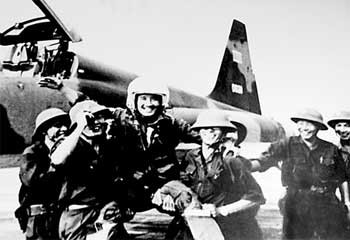
Guests can also visit the palace’s cabinet conference room, where on April 21, 1975, in the face of fierce military attacks by liberation army forces, Republic of Vietnam President Nguyen Van Thieu announced his resignation. He later fled the country.
His deputy, Tran Van Huong, succeeded Thieu, but he also later resigned after failing to make headway in combating liberation forces.
On April 28, Duong Van Minh, a veteran general, took on the presidency, becoming the last president of the Republic of Vietnam, but his presidency lasted just 48 hours.
On April 30, 1975, a liberation army tank driven by Lieutenant Bui Quang Than crashed through the main gate, signaling the victory of liberation forces.
Lieutenant Than proceeded to raise a flag of the Provisional Revolutionary Government of the Republic of South Vietnam at the palace, marking the victorious end of the 30-year resistance war of the Vietnamese nation.
Thirty-five years has passed since that time, and now Thong Nhat Hall is an agency managed by the Government Office. It serves sightseers and hosts both domestic and international conferences.
The architecture of the Hall combines both Western and Eastern styles, and is also a combination of traditional and modern construction.
According to Hall staff, “more than 3.2 million local and foreign tourists visited the Hall in the 2005-2009 period to learn about the last stronghold of the Saigon regime that collapsed totally on April 30, 1975.”
